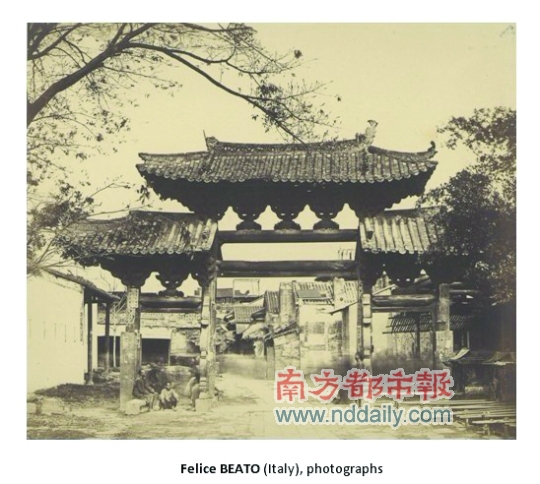|

Edition: RB16 Edition Title: Cultural Section
Manuscripts: Southern Metropolis Daily Mar. 23rd 2012
Abstract: The 4th Guangzhou Triennial is a project lasts for three years.
After the Inauguration Exhibition “Meta-question——Back to the Museum per se”
launched in September last year and five project exhibitions including
“Disenchantment of Chinese Imagination” came one after another, the spotlight of
the triennial, the Theme Exhibition named "the Unseen", will be unveiled in
September this year.
The 4th Guangzhou Triennial is a project lasts for three years. After the
Inauguration Exhibition “Meta-question——Back to the Museum per se” launched in
September last year and five project exhibitions including “Disenchantment of
Chinese Imagination” came one after another, the spotlight of the triennial, the
Theme Exhibition will be unveiled in September this year. Nearly 80 artists from
30 countries and regions will together bring an art feast for citizens in
Guangzhou, showing their works in Guangdong Museum of Art, Guangzhou Opera
House, Grandview Plaza and other venues.
Titled "the Unseen", the Theme Exhibition is curated by Jiang Jiehong,
professor of Birmingham Institute of Art and Design, and Jonathan Watkins, the
curator of the 11th Sydney Biennale and director of IKON Gallery.
The Unseen for Imagination
Five key words are found in the Theme Exhibition: “the unseen object”, “the
unseen event”, “the unseen truth”, “the unseen realm” and “the unseen change”.
Despite its obscurity, "the Unseen" is not incomprehensible. “‘The Unseen' is a
visual journey through both space and time." explained Jiang.
"Taking Jesus as an example," the curator said, "No artist has ever seen
Jesus. However the image of Jesus created from imagination plays a key role in
the history of western art. We could even say that 'no Jesus, no western art'.
Our artistic creation relies a lot on the visual imagination, and it is,
exactly, this dependency gives a rich diversity to art."
The Oldest Photo of Guangzhou
How to illustrate "the Unseen" through artworks? Jiang gave another example.
Due to limited visual acuity people cannot see things tiny in size. Therefore
some art pieces require a magnifier in the exhibition. "Those huge things, such
as wind, electricity… cannot be seen either. We will have a work with horizontal
branches stretch outside the window in the exhibition. As the wind blows, the
branches sway and leave traces on the white paper. Through this way 'the unseen'
wind is transformed into a visible work."
In the news conference Jiang showed an old photo, which will be part of the
exhibition too. It is a photo of Guangzhou shot by Photographer Felice Beato in
1860. “It may be the earliest recorded view of Guangzhou, and it is 'unseen'
even to the aged locales.” He indicated that not only the big names but also
those who have passed away could be found in this exhibition. Some works date
back to 17th and 19th centuries. He thought "this exhibition could be the best
of the year.”
Practice-led rather than Theme-led
Different from a typical theme-led exhibition, this theme exhibition is
steered in the manner of practice orientation. Jiang said the role of curator
could be restricted once a concept was predefined and thus artists could never
really take part. He wanted to hold the exhibition with imagination from both
curators and artists. The other curator Jonathan Watkins stressed the importance
of “encouraging the artist to return art back to life through their visual
imagination.”
Interviewed and written by Chen Xiaoqin, reporter of Southern
Metropolis | 
